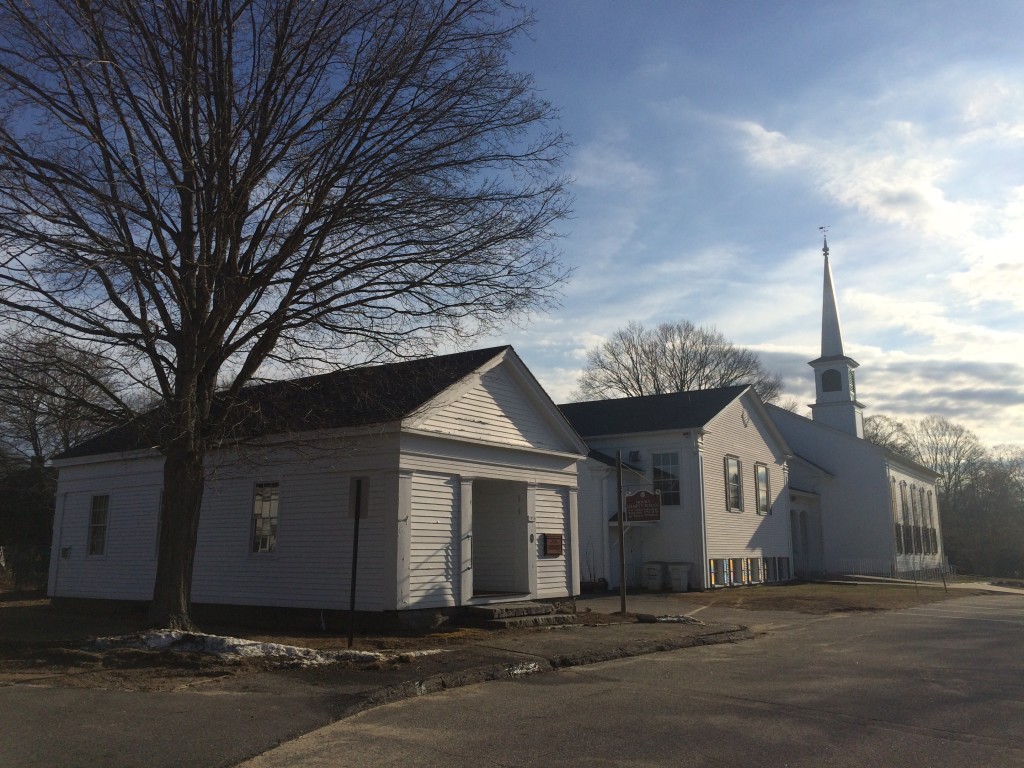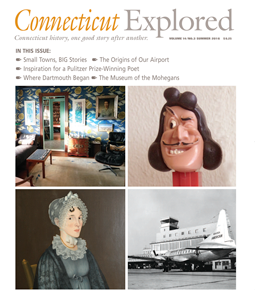By Walter W. Woodward
(c) Connecticut Explored Inc. Summer 2016
In early 1735 the village of Lebanon Crank (now Columbia) was looking for a new minister. The previous minister, hired fresh out of Yale a decade earlier, displayed too much fondness for drink and had been forced to resign. His replacement, another fresh Yale graduate, was Eleazar Wheelock, who was to have a lasting impact on the town and on the history of American religion, Indian relations, and education.
Wheelock was a gifted orator with a special talent for awakening in his hearers the terrifying sense of sinfulness and fear of damnation that were crucial factors in the religious revival we know as the Great Awakening. This ability made him one of the movement’s most sought-after preachers. While serving his own flock, he was constantly called on to preach throughout New England, at one time offering more than 450 sermons in a single year. This itinerancy made him a special target of opponents of the Awakening and put him in constant disagreement with his home town over what he should be paid. (Until 1818, Connecticut’s ministers’ salaries were paid by local taxpayers, not just church members, so in the best of circumstances ministers’ compensation was a source of contention.)
To supplement what he saw as an insufficient salary, Wheelock began teaching English students in his Columbia home. Joining them in 1743 was Samson Occom, a remarkable Mohegan scholar whom Wheelock educated, preparing him to be a minister to other indigenous people. Wheelock came to believe he was divinely called to train Indian missionaries. He established Moor’s Indian Charity School (named after a donor) in 1754, and by 1770, 49 boys and 18 girls from tribes near and far had come to be educated there. Wheelock sent Occom, his first indigenous minister, on a highly successful trip to England between 1766 and 1768 to raise funds to move the school closer to the Anglo-Indian frontier. Though Occom raised £12,000, more than today’s equivalent of two-and-a-half million dollars, Wheelock dismissed his efforts, which led to a permanent rupture between the two. Wheelock, like a modern corporate executive, shopped his now well-funded Indian school’s relocation around to see who would offer the best incentives. The winner in a multi-colony competition was New Hampshire, which provided Wheelock’s school a huge land grant near present day Hanover. As a result, Dartmouth College was founded there by Wheelock in 1769, and it continues to be one of the nation’s premier educational institutions.
 For his part, Samson Occom joined other native missionaries in establishing the Brothertown community in New York, a place for Indian settlement and Christian conversion far removed from Wheelock’s influence. Visitors who want to find the roots of both Dartmouth College and, indirectly, Brothertown, can do so at Moor’s Indian Charity school house, behind the Congregational church, on the green in Columbia.
For his part, Samson Occom joined other native missionaries in establishing the Brothertown community in New York, a place for Indian settlement and Christian conversion far removed from Wheelock’s influence. Visitors who want to find the roots of both Dartmouth College and, indirectly, Brothertown, can do so at Moor’s Indian Charity school house, behind the Congregational church, on the green in Columbia.
Walter W. Woodward is the Connecticut state historian.
LISTEN
Grating the Nutmeg is the podcast of Connecticut history produced by CT Explored and the Office of the State Historian
Grating the Nutmeg episode 71: Eleazar Wheelock, the Great Awakening, Samson Occom, and the Indian School
Grating the Nutmeg episode 72: Samson Occom, the Man with Mohegan Elder Beth Regan
